While many domestic cats famously avoid water, their larger cousin – the tiger – has a surprising affinity for aquatic environments. Tigers are exceptional swimmers who not only tolerate water but actively seek it out for various practical and recreational purposes. This remarkable ability sets them apart from many other big cats and plays a crucial role in their survival, hunting strategies, and daily life in the wild. From the mangrove swamps of the Sundarbans to the rivers crossing their territories throughout Asia, tigers’ swimming prowess has fascinated scientists, conservationists, and wildlife enthusiasts alike.
The Natural Swimming Ability of Tigers
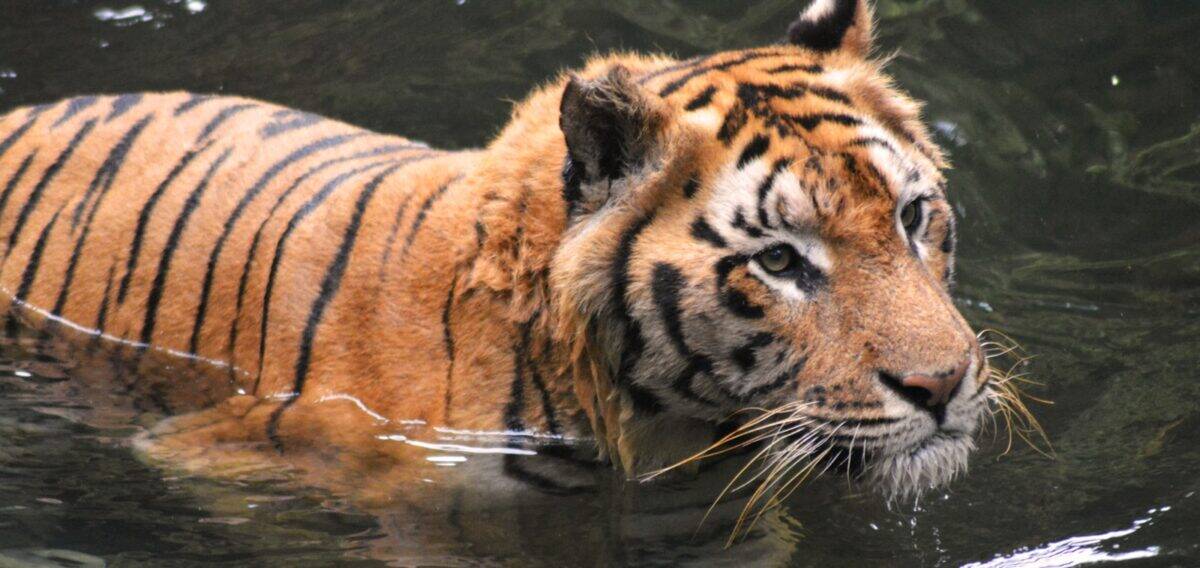
Tigers are born with an innate ability to swim, unlike many other feline species. Their powerful muscles, especially in their front legs and shoulders, provide the strength needed for efficient swimming. A tiger can swim up to 6 miles (9.6 kilometers) at a stretch, demonstrating remarkable endurance in water. Their large paws act as effective paddles, while their long tails serve as rudders, helping them maintain direction and balance while swimming. These physical adaptations make tigers naturally adept swimmers from a young age, with cubs often learning to navigate water under their mother’s guidance before they’re fully grown.
Swimming as a Cooling Mechanism
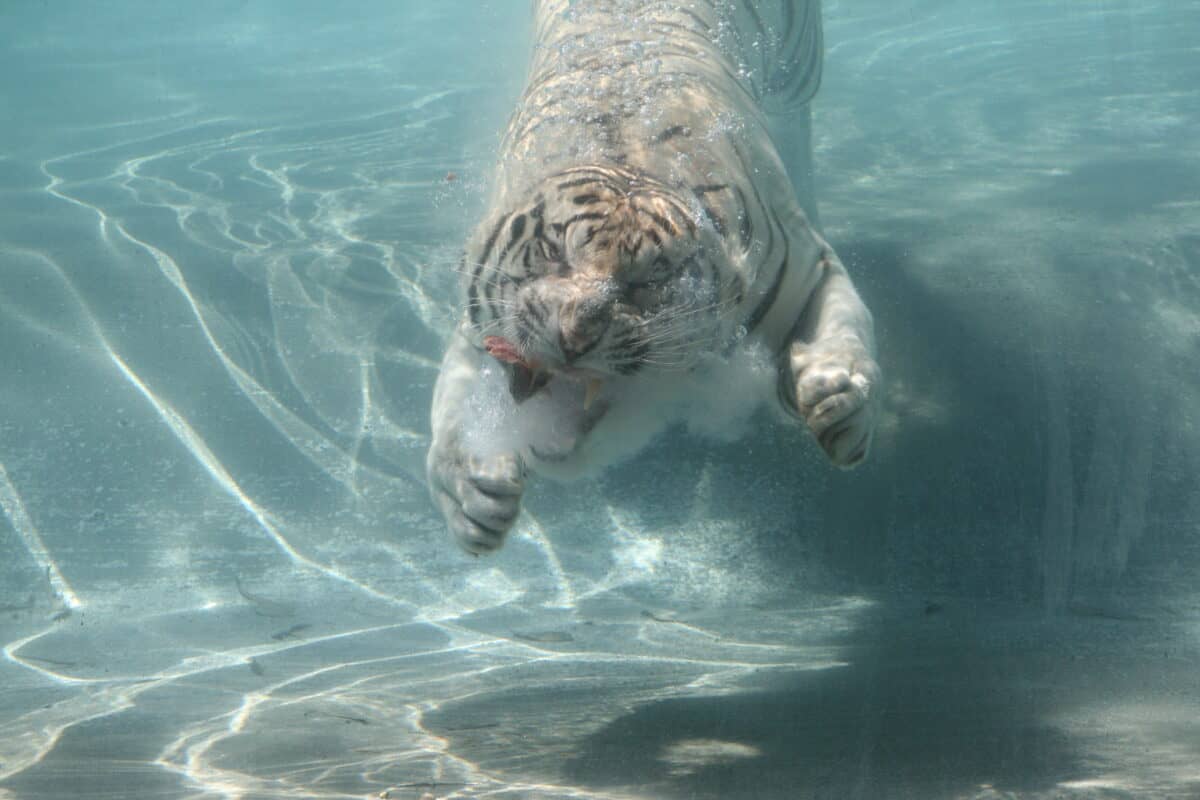
One of the primary reasons tigers enjoy swimming is for thermoregulation. In the hot climates of their native ranges across Asia, water provides an effective way to cool down. During sweltering summer months, when temperatures can soar above 100°F (38°C), tigers often retreat to rivers, lakes, or ponds to lower their body temperature. This behavior is particularly common in regions like India, where the heat can be oppressive. Unlike animals that rely solely on panting or seeking shade, tigers actively use water immersion as a key strategy to prevent overheating, sometimes spending hours soaking in water during the hottest parts of the day.
Tigers of the Sundarbans: The Swimming Specialists
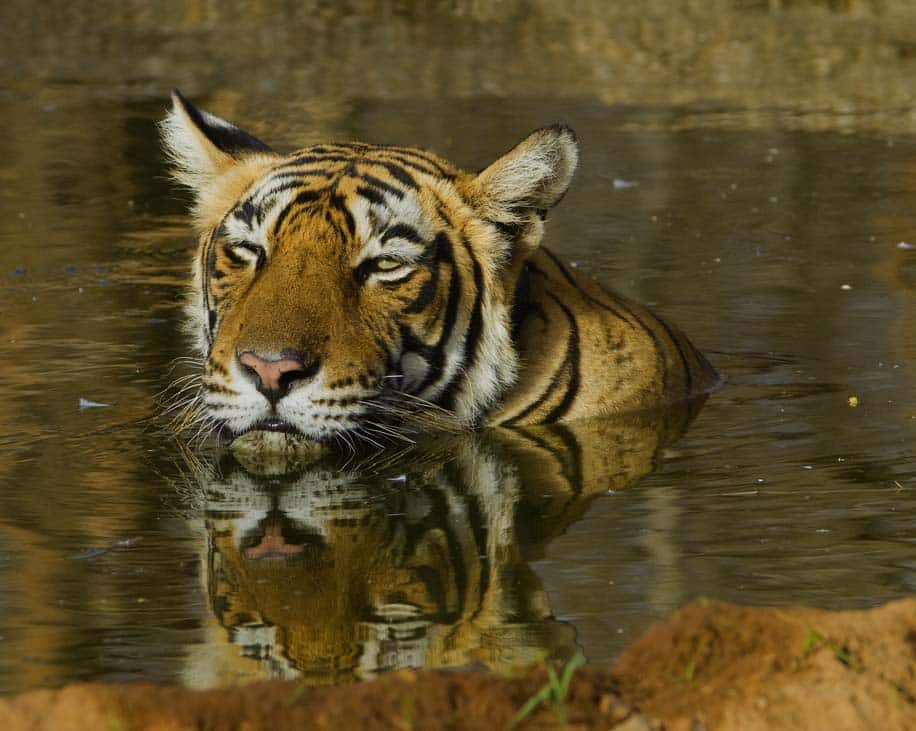
The Bengal tigers of the Sundarbans mangrove forest that spans Bangladesh and India represent perhaps the most aquatically adapted tiger population in the world. These tigers have evolved to thrive in a unique ecosystem of tidal waterways, islands, and swamps. They regularly swim between islands, sometimes covering distances of several kilometers through brackish water. Research suggests that Sundarbans tigers may spend up to 60% of their time in or near water. They’ve adapted to hunting in water, drinking saline water, and using the complex waterways as travel corridors. This population demonstrates just how integral swimming is to tiger survival in certain habitats.
Hunting Advantages in Water

Swimming provides tigers with significant hunting advantages. By entering water, tigers can approach prey undetected or from unexpected angles. Some tigers are known to hunt water-loving prey like wild boar, sambar deer, or water buffalo when these animals come to drink or cool off. In the Sundarbans, tigers have even been documented taking prey directly from the water, including fish and water birds. Their ability to swim silently and swiftly gives them a tactical advantage over prey that may be less comfortable in aquatic environments. Additionally, the water allows tigers to hunt during hot daytime hours when they might otherwise rest, expanding their hunting opportunities.
Recreational Swimming Behavior
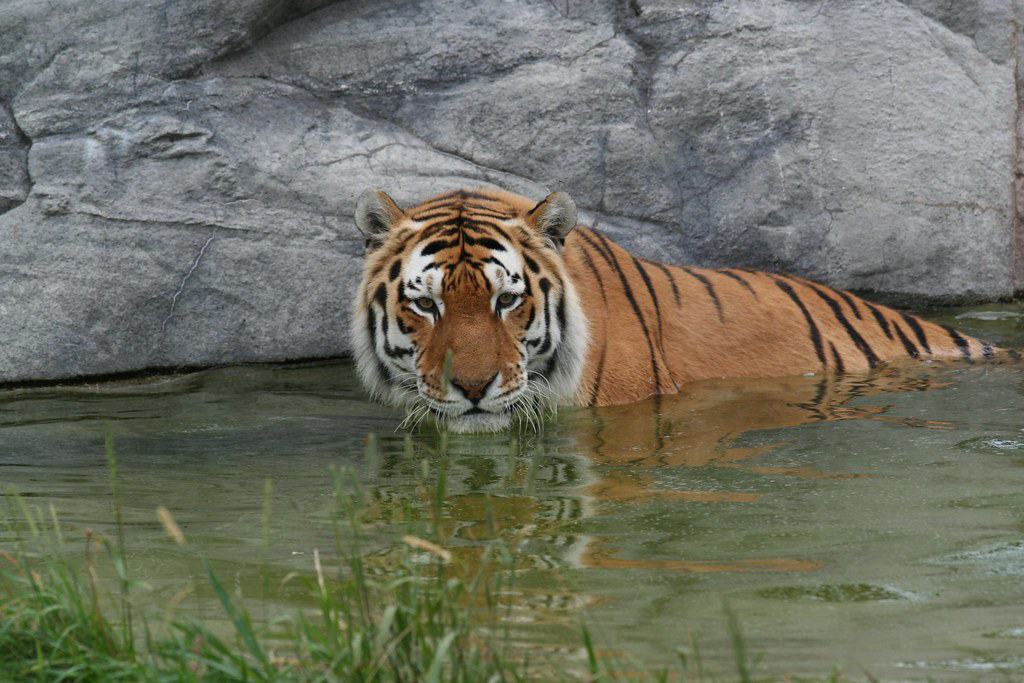
Beyond practical purposes, tigers appear to derive genuine enjoyment from swimming and playing in water. Wildlife researchers and zookeepers alike have observed tigers engaging in what can only be described as playful behavior in water—splashing, pouncing on floating objects, and performing underwater dives with no apparent hunting objective. In captivity, many tigers enthusiastically use pools provided for enrichment, sometimes preferring water play over other activities. This suggests that swimming serves both utilitarian and recreational functions for these magnificent cats, adding another dimension to our understanding of their complex behavior patterns.
Comparing Tiger Swimming to Other Big Cats

Among the big cats, tigers stand out for their swimming abilities. While jaguars also demonstrate comfort in water and will readily swim across rivers, most other big cats show a strong aversion to deep water. Lions typically avoid swimming except when absolutely necessary, and leopards, though capable swimmers when required, generally prefer to stay dry. Cheetahs, with their lightweight frames built for speed on land, are particularly poor swimmers. Tigers’ unique comfort with water is believed to be related to their evolutionary history in wetland-rich parts of Asia, where adaptability to various terrains—including water bodies—provided survival advantages over millions of years.
Swimming Capabilities Across Tiger Subspecies
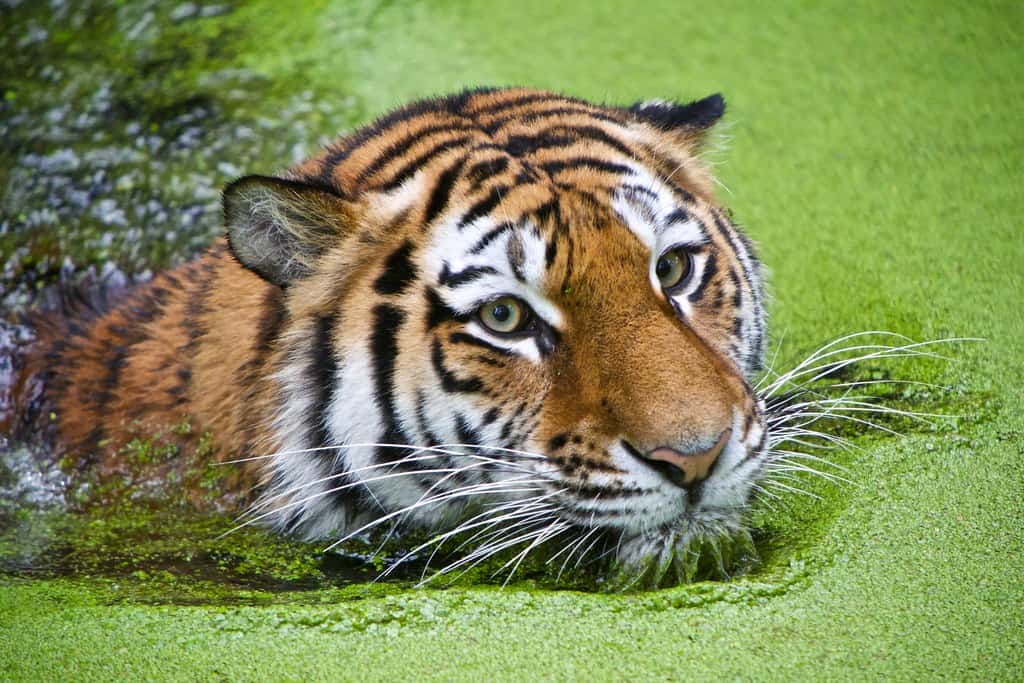
All tiger subspecies can swim, but their affinity for water varies based on their native habitats. The Siberian (Amur) tiger, despite living in colder regions, will break ice to access water for drinking and occasionally swim across frozen rivers. Malayan and Sumatran tigers inhabit tropical rainforests with numerous waterways and are proficient swimmers. The now-extinct Javan and Balinese tigers were also known to be comfortable in water. The Caspian tiger, before its extinction, was documented swimming across substantial water bodies like the Amu Darya river. This universal swimming ability across geographically distant subspecies underscores how fundamental this skill is to tiger biology, regardless of their specific habitat.
Tigers Swimming in Captivity
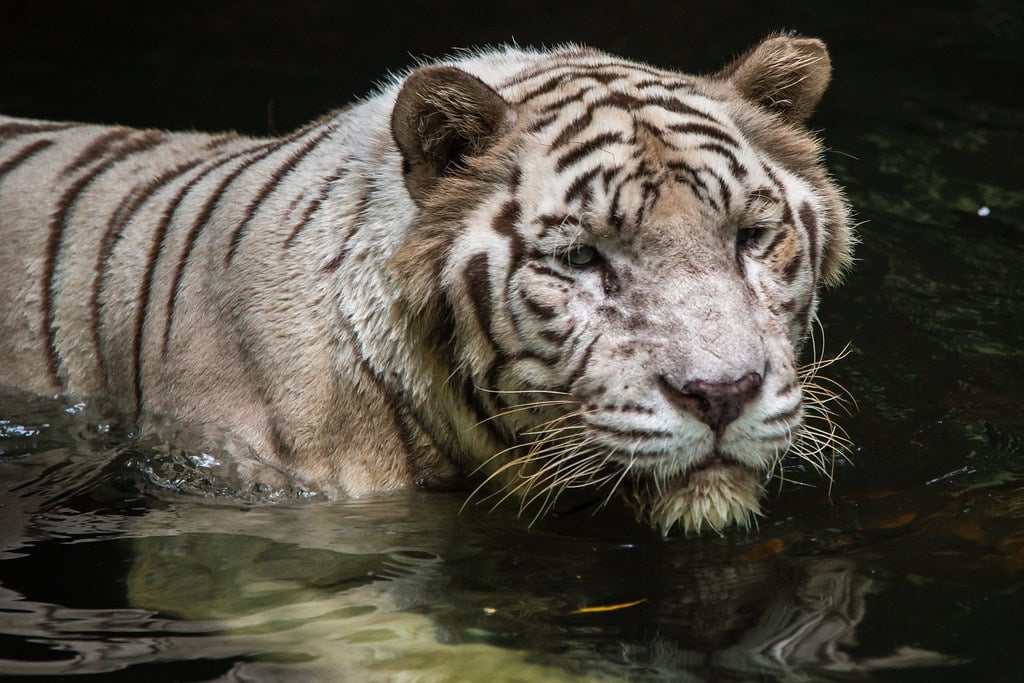
Modern zoological facilities increasingly recognize the importance of water features in tiger enclosures, not just for drinking but as essential enrichment. Tigers in captivity that have access to pools or water features often display higher activity levels and fewer stress behaviors than those without. Many facilities report that swimming is one of their tigers’ favorite activities, with some individuals developing personal preferences for certain water-based behaviors, like completely submerging or “fishing” for underwater enrichment items. Conservation centers working on tiger rehabilitation programs include swimming opportunities as part of preparing tigers for potential release, acknowledging this behavior’s importance in their natural repertoire.
The Physics Behind Tiger Swimming

Tigers employ a swimming technique similar to the “dog paddle,” using alternating movements of their front legs while their hind legs provide additional propulsion. Their broad paws, which can spread to nearly 8 inches (20 cm) wide, create effective resistance against the water. A swimming tiger can maintain speeds of approximately 4 mph (6.4 km/h)—not as fast as they run on land, but impressive for an animal not primarily adapted for aquatic life. Their dense muscular build, which might seem disadvantageous for swimming, is offset by their efficient stroke and natural buoyancy. Their waterproof fur also helps, trapping air to provide additional buoyancy while the outer guard hairs prevent the undercoat from becoming waterlogged.
Water as Territory Boundaries
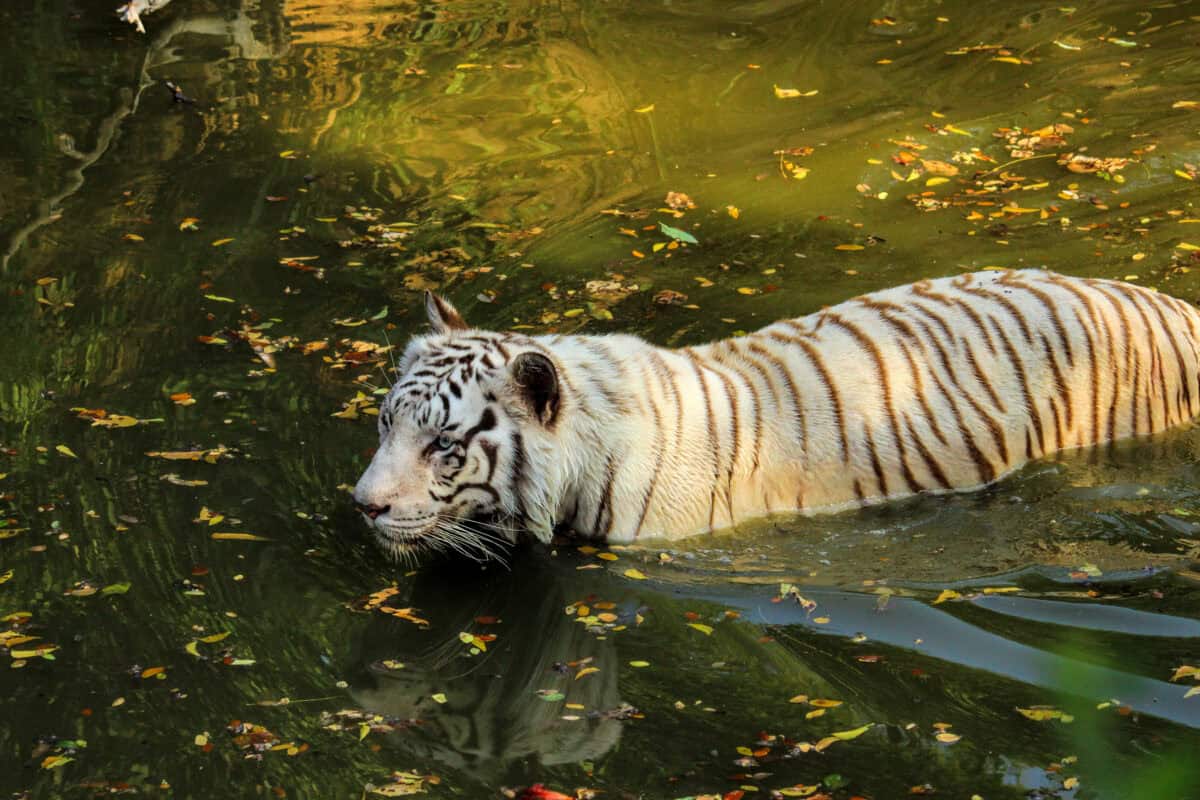
Rivers and streams often serve as natural boundaries for tiger territories in the wild. Rather than limiting their movement, these water features become important parts of their patrol routes. Tigers regularly swim across rivers to maintain and defend their territories, which can span up to 40 square miles (103 square kilometers) for males. They frequently use waterways as travel corridors, finding it easier to move through water than dense undergrowth in some habitats. GPS tracking studies have revealed that tigers don’t hesitate to cross substantial water bodies when establishing new territories or searching for mates, demonstrating how their swimming ability expands their effective range and access to resources.
Conservation Implications of Tiger Swimming
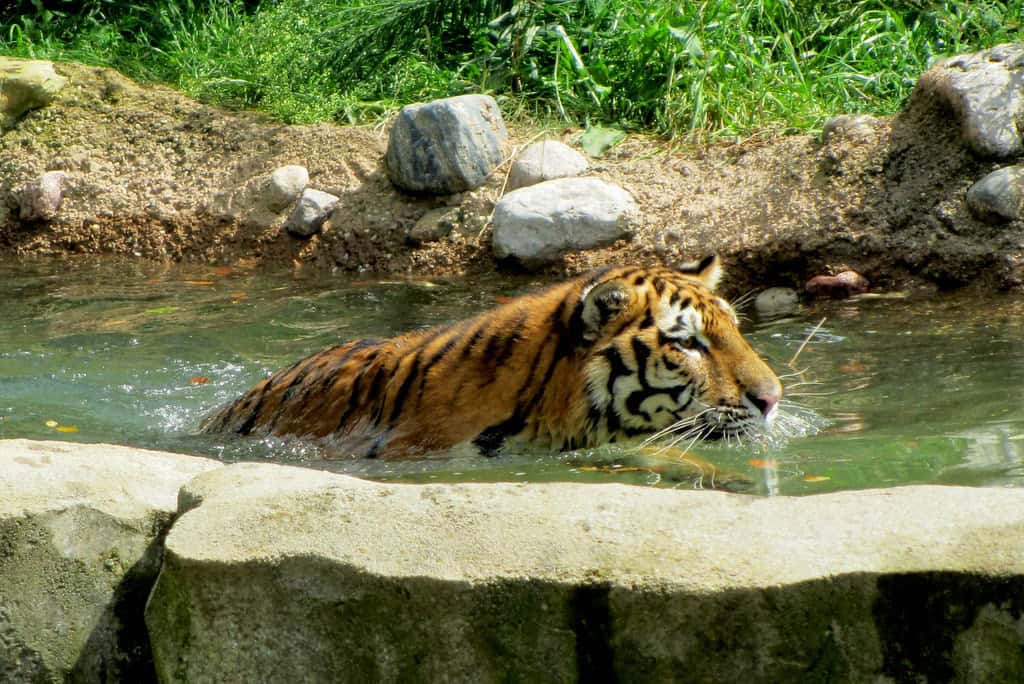
The swimming ability of tigers has important conservation implications. As tiger habitats become increasingly fragmented by human development, water bodies that were once within their territories may now serve as barriers or corridors between isolated populations. Conservation strategies now consider tiger swimming capabilities when designing protected areas and wildlife corridors. In regions where human-tiger conflict occurs near water, such as the Sundarbans, understanding tiger swimming behavior helps develop better safety protocols for local communities. Additionally, climate change models predict increased flooding in some tiger habitats, making their swimming ability potentially more critical for survival as landscapes transform in coming decades.
Cultural Significance of Swimming Tigers

Swimming tigers have captured human imagination across cultures for centuries. In many Asian traditions, tigers crossing water represent transition, courage, and persistence against obstacles. Traditional stories from the Sundarbans region feature swimming tigers prominently, often as powerful spirits or guardians of the waterways. In contemporary culture, images of tigers swimming have become iconic wildlife photography subjects, appearing in nature documentaries and conservation campaigns. The striking image of a tiger’s striped head cutting through water, eyes focused and determined, resonates with viewers worldwide and has become a powerful symbol in conservation messaging, highlighting both the species’ adaptability and vulnerability in a changing world.
Conclusion

The swimming abilities of tigers represent one of the most fascinating adaptations of these magnificent big cats, setting them apart from many of their feline relatives. From the practical benefits of hunting and cooling to what appears to be genuine enjoyment of water, tigers’ relationship with aquatic environments showcases their remarkable adaptability and complex behavior patterns. As we continue conservation efforts to protect the remaining wild tiger populations, understanding their swimming behavior provides valuable insights into their ecological needs and potential resilience to habitat changes. Tigers’ affinity for water reminds us that these iconic predators are even more versatile and adaptable than we might assume, capable of mastering multiple environments in their quest for survival.
- How Penguins Take Turns at Sea and Nest to Raise Chicks - August 9, 2025
- Dolphin Brains Compare to Those of Apes and Humans - August 9, 2025
- 14 Cutting-Edge Biotech Innovations That Will Shape the Future - August 9, 2025

